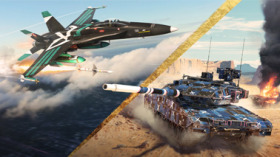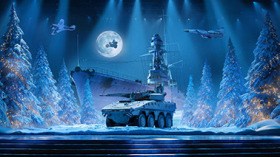
- For PC
- For MAC
- For Linux
- OS: Windows 10 (64 bit)
- Processor: Dual-Core 2.2 GHz
- Memory: 4GB
- Video Card: DirectX 11 level video card: AMD Radeon 77XX / NVIDIA GeForce GTX 660. The minimum supported resolution for the game is 720p.
- Network: Broadband Internet connection
- Hard Drive: 22.1 GB (Minimal client)
- OS: Windows 10/11 (64 bit)
- Processor: Intel Core i5 or Ryzen 5 3600 and better
- Memory: 16 GB and more
- Video Card: DirectX 11 level video card or higher and drivers: Nvidia GeForce 1060 and higher, Radeon RX 570 and higher
- Network: Broadband Internet connection
- Hard Drive: 62.2 GB (Full client)
- OS: Mac OS Big Sur 11.0 or newer
- Processor: Core i5, minimum 2.2GHz (Intel Xeon is not supported)
- Memory: 6 GB
- Video Card: Intel Iris Pro 5200 (Mac), or analog from AMD/Nvidia for Mac. Minimum supported resolution for the game is 720p with Metal support.
- Network: Broadband Internet connection
- Hard Drive: 22.1 GB (Minimal client)
- OS: Mac OS Big Sur 11.0 or newer
- Processor: Core i7 (Intel Xeon is not supported)
- Memory: 8 GB
- Video Card: Radeon Vega II or higher with Metal support.
- Network: Broadband Internet connection
- Hard Drive: 62.2 GB (Full client)
- OS: Most modern 64bit Linux distributions
- Processor: Dual-Core 2.4 GHz
- Memory: 4 GB
- Video Card: NVIDIA 660 with latest proprietary drivers (not older than 6 months) / similar AMD with latest proprietary drivers (not older than 6 months; the minimum supported resolution for the game is 720p) with Vulkan support.
- Network: Broadband Internet connection
- Hard Drive: 22.1 GB (Minimal client)
- OS: Ubuntu 20.04 64bit
- Processor: Intel Core i7
- Memory: 16 GB
- Video Card: NVIDIA 1060 with latest proprietary drivers (not older than 6 months) / similar AMD (Radeon RX 570) with latest proprietary drivers (not older than 6 months) with Vulkan support.
- Network: Broadband Internet connection
- Hard Drive: 62.2 GB (Full client)
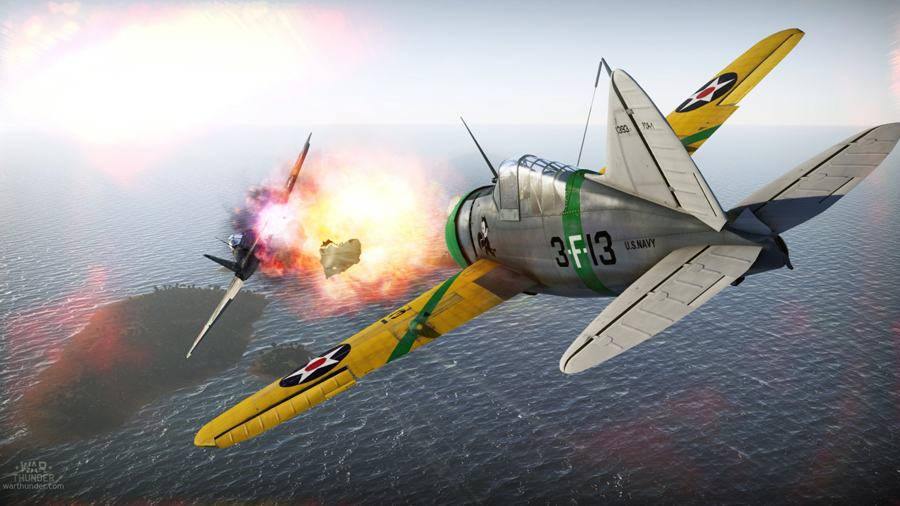
Tach's F2A-1 Buffalo shoots down a Japanese Zero
Born on 19th April 1905 in Pine Bluff, Arkansas, John Smith Thach was the son of two school teachers. Following in his older brother’s footsteps, Thach joined the US Navy and graduated from the United States Naval Academy, Annapolis, in 1927 before serving onboard the battleships USS Mississippi and USS California. In 1929 he transferred across to become a naval pilot, qualifying for his wings in 1930. Streamed onto fighters, Thach joined VF-1B – known as the ‘High Hats’ due to their unit insignia depicting a top hat. In 1931, Lieutenant (Junior Grade) Thach was one of several US Navy pilots who flew Curtiss F8C-4s for the Hollywood movie ‘Helldivers’. Thach was also employed as an instructor and a test pilot, and broke an aviation record when he flew the only produced Hall XP2H four engine biplane flying boat from Norfolk, Virginia to Panama in less than twenty-six hours.
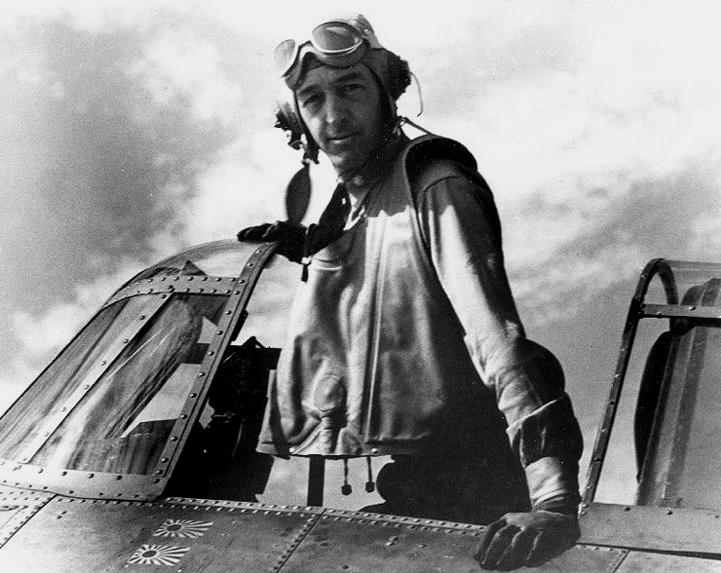 |
| L.Cdr John S. Thach, CO of VF-3 |
During the 1930s, Thach served in Maritime Patrol squadrons flying larger aircraft, as well as with fighter squadrons. However, it was with the latter that Thach gained an enviable reputation as one of the foremost aerial marksmen within the US Navy. With war clouds on the horizon, Lieutenant Thach was now the Executive Officer (second-in-command) of VF-3, a naval fighter squadron. In 1940 he received a Letter of Commendation for his exceptional training of tactics, aerial gunnery and bombing.
When the United States joined the Second World War in December 1941, Thach was a thirty-six year old Lieutenant Commander with over 3000 flying hours logged. He was now the Commanding Officer of VF-3, equipped with Brewster F2A Buffalos but soon converting to the Grumman F4F Wildcat. The squadron spent much of the lead up to the Second World War and the first few months of the conflict embarked on the USS Saratoga and USS Yorktown. Thach’s VF-3 took part in the aborted Rabaul assault in February 1942, and the Lae-Salamua assault the next month.
With US Naval Aviation mainly being concentrated in the Pacific Theatre, the highly maneuverable fighter aircraft of the Japanese military were perceived to be the main threat. With this in mind, Thach set about developing new tactics for his aviators whilst VF-3 were based in San Diego. He first developed new ideas with matchsticks on a table before then tested in the air the next day. Building on these experiments, Thach pioneered what he initially named the ‘Beam Defense Position’ but what would soon be known as the ‘Thach Weave’.
_1941.jpg) |
| F4F-3A Wildcat taking off from USS Saratoga (CV-3) 1941 |
As with most successful tactics, the Thach Weave was fairly simple – when a pair of US Navy fighters were attacked by a more maneuverable opponent, the fighter being attacked would become the ‘bait’ whilst his wingman was now the ‘hook’. The hook and bait would turn in towards each other to cross paths and then, when they had flown for long enough on a divergent course, would turn back in to cross paths again. If successfully executed, the bait would cross in front of the nose of the hook, with the enemy fighter on his tail. This would give the hook the opportunity to then latch onto the enemy fighter and eliminate him. The Thach Weave could also be used on a slightly larger scale with two pairs of fighters, with a ‘hook’ pair and ‘bait’ pair being used against an enemy formation. Thach tested the theory by leading four Wildcats and with the help of fellow VF-3 pilot Edward ‘Butch’ O’Hare leading another four fighters in the role of the attacking force. They were all satisfied with the results.
Whilst there were a few prior isolated uses, the Thach Weave was tested in anger at the Battle of Coral Sea in May 1942, where it yielded impressive results. VF-3 used the maneuver in the defense of the carrier USS Lexington, where the squadron destroyed nineteen Japanese aircraft. The Thach Weave also saw even greater use a month later during the Battle of Midway, again with great success. By the Battle of Midway, VF-3 had been re-equipped with the new F4F-4 variant of the Wildcat. Thach was not enamored with the new fighter, the increase in firepower from four to six 0.50 caliber guns came with a decrease in performance at a time where Thach wanted every last ounce of speed and agility for his pilots rather than two more guns. Nonetheless, even though outnumbered Thach personally accounted for three Zeros destroyed in a single engagement on June 4th, and a B5N2 torpedo bomber later in the day. By the end of the Battle of Midway Thach was now credited with six enemy aircraft destroyed.
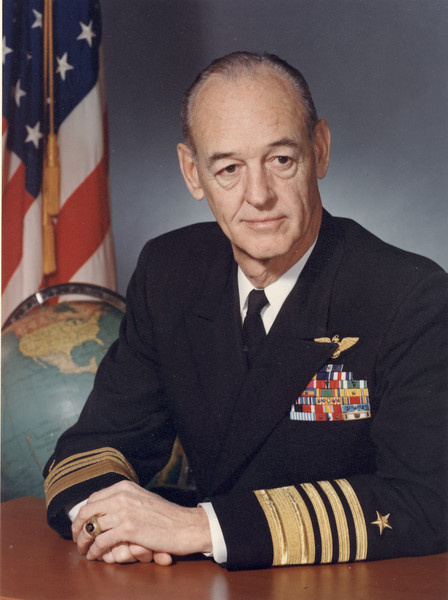 |
| Official Navy portrait of Admiral John S. Thach |
Thach’s success came at a price – deemed to valuable to risk in combat, Thach was removed from the front line after only six months of offensive operations, approximately half of which had been away from enemy action. He was employed as a combat tactics instructor at Jacksonville, Florida before finally returning to sea as Vice Admiral John McCain’s Operations Officer just in time to witness the Japanese surrender in September 1945.
After the war Thach was promoted to Captain and commanded the carrier USS Sicily during the Korean War. He later commanded the USS Franklin D. Roosevelt. Promoted to Rear Admiral in 1955, Thach moved on to pioneer naval tactics in Anti-Submarine Warfare during the Cold War before accepting a staff appointment in the Pentagon as Deputy Chief of Naval Operations for Air. He retired as a full Admiral in May 1967, his last appointment being Commander-in-Chief of US Naval Forces in Europe.
John Thach passed away on April 15th 1981, only a few days before his 76th birthday. An Oliver Hazard Perry Class frigate was named USS Thach in his honour, the warship being decommissioned in November 2013.
About The Author - Mark Barber, War Thunder Historical Consultant
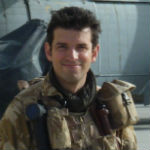
Mark Barber is a pilot in the British Royal Navy's Fleet Air Arm. His first book was published by Osprey Publishing in 2008; subsequently, he has written several more titles for Osprey and has also published articles for several magazines, including the UK's top selling aviation magazine 'FlyPast'. His main areas of interest are British Naval Aviation in the First and Second World Wars and RAF Fighter Command in the Second World War. He currently works with Gaijin Entertainment as a Historical Consultant, helping to run the Historical Section of the War Thunder forums and heading up the Ace of the Month series.


